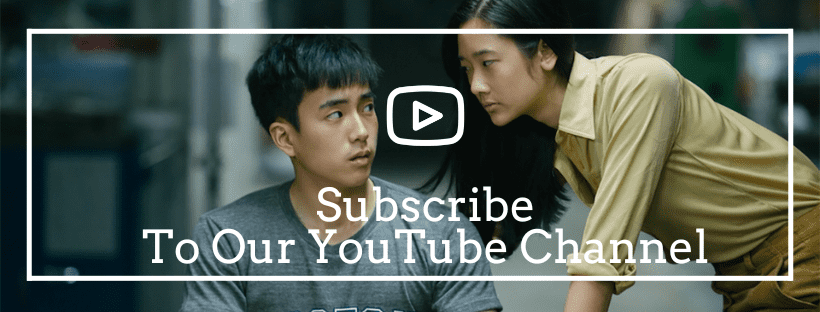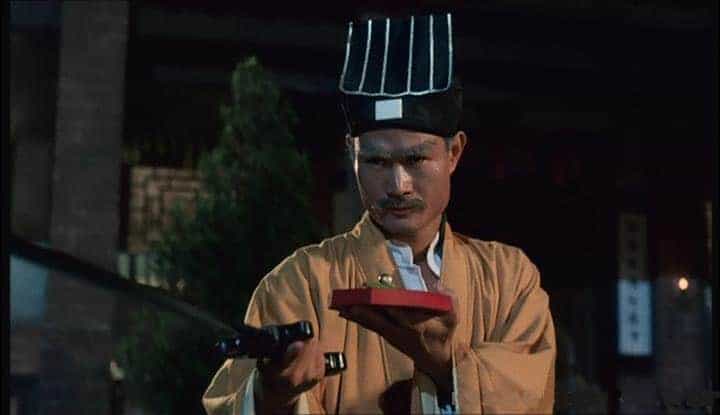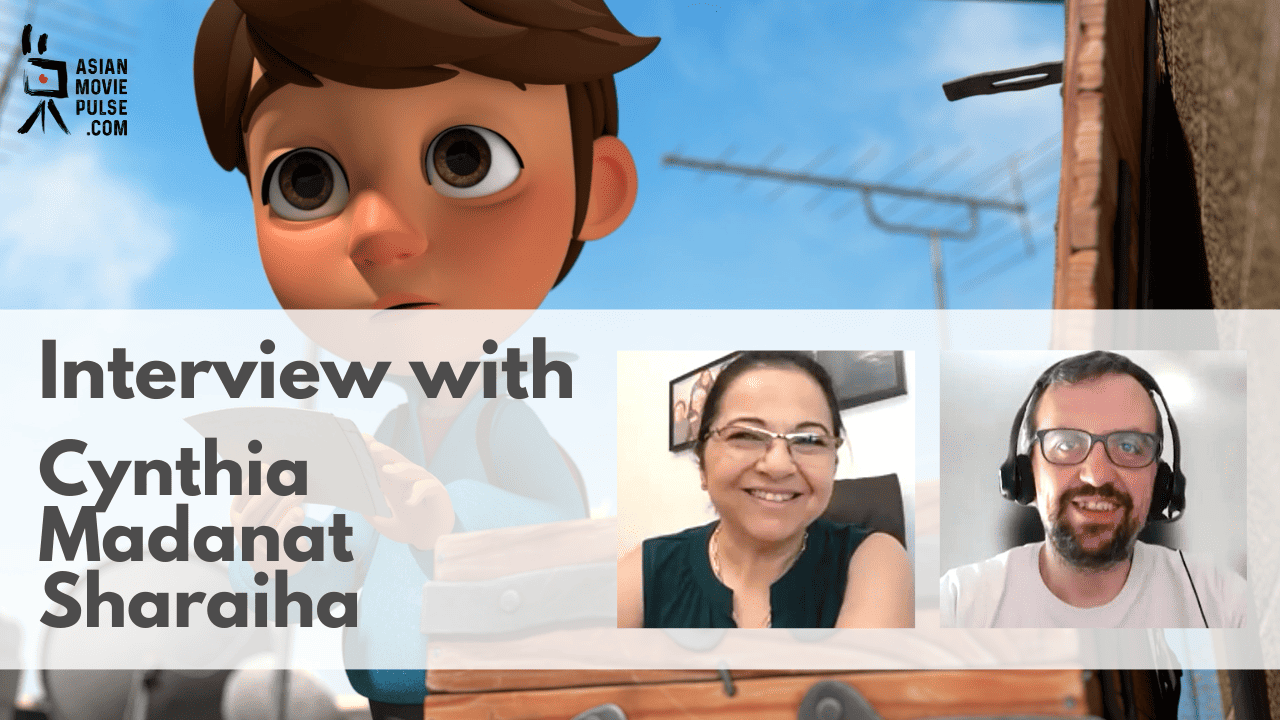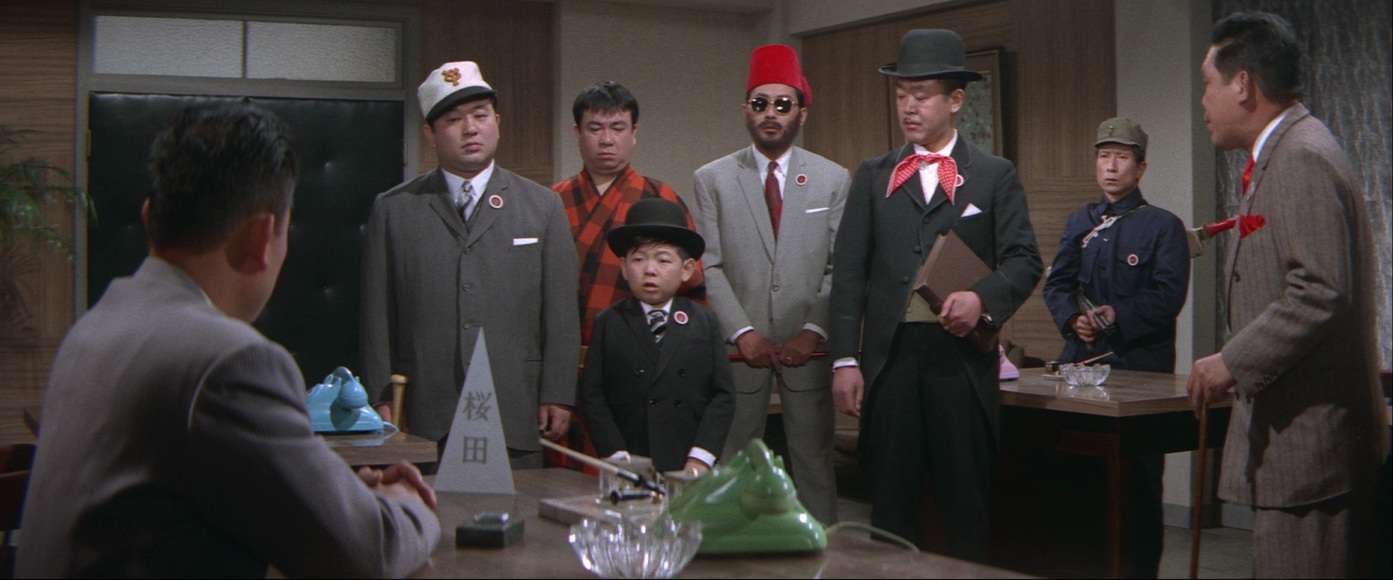Woo Ming JIn is back in the international festival scene with his layered female revenge drama that borrows from genre tropes, and incorporates animation and folklore. In “Stone Turtle”, which screens in Locarno's international competition, an isolated Malaysian island becomes a place of the merciless cat and mouse game under the wake eyes of ghosts who all have two things in common: being women, and illegal immigrants.
In this Malaysian-Indonesian co-production, two acclaimed actors slip into lead roles: Indonesian Asmara Abigail (Joko Anwar's regular cast since “Gundala”), and Malaysian Bront Palarae (last seen also in Joko Anwar's “Satan's Slaves: Communion”, where he co-starred with Abigail). Their chemistry is charged with all ingredients needed for a proper revenge story, none of them painted in black & white, but nuanced enough to make a distinctive line between good and bad.
Asian Movie Pulse met with Woo Ming Jin in Locarno, right after “Stone Turtle”s world premiere to talk about the film's unique look, about the joy filming with the small crew, and about preserving a folk tale from oblivion. He was accompanied by his creative collaborator, the film's producer/ editor Edmund Yeo.
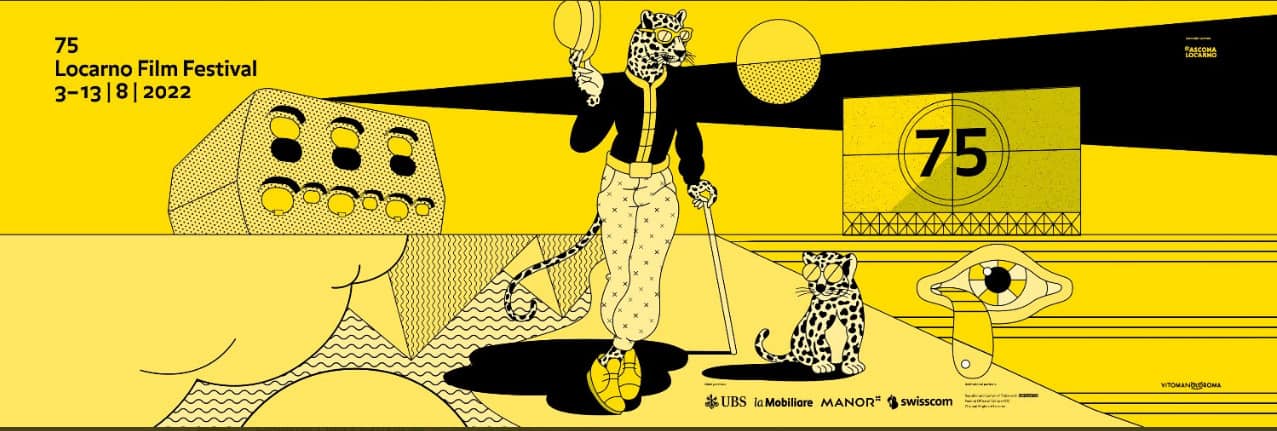
Let's start with a question regarding the movie's title. Where does it come from?
“Stone Turtle” is an obvious reference to the Maylasian eponymous myth from the East coast, which is also given in the film in form of an animation. It is about how two turtles get stranded on an island, and are told by a crab about the magical pool where there is a lot of nice food, but also that they are not allowed to touch anything there. Actually, in the original story, the female turtle begs the male turtle not to go, but he does it anyway after promising not to touch anything. Despite of making a promise, and being previously warned not to do it, he eats the gorgeous food after which he turns into stone. The female turtle becomes really sad, and starts crying. So, the folklore goes: each time we see turtles who come back to lay eggs, it's because they are mourning the husband from that myth. In fact, turtles return each year to the same beach. We thought to use that title both in the literal and metaphorical sense, as an allegory to our film itself. I took the title as the starting point.
You opted for a non-linear narrative which occasionally uses seemingly repetitive elements to illustrate different angles of the story, and even different layers of both reality and dream. Can you tell us something about it?
For me, it was actually a very simple film, but we were told by many people that it is rather complicated In my mind, it was a very clear and simple tale told in many versions. There is a time loop or the ghost version, or the alternate version, that I leave up to the audience to decide, but genre films are my guilty pleasure. I obviously like time-, or time travel movies like the Japanese anime “Kimi no na wa”, and “Time Shadows”, science fiction movies like “Edge of Tomorrow”, or Harold Ramis: “Groundhog Day” and even the Netflix series “Russian Doll”. I wanted to do a film that plays on certain genres and use typical tropes: a littler bit of romance, ghosts, action, thriller. If you distill everything, it becomes quite a simple story to me because of its layers. We were very involved in the character development, and at the same time, I wanted to infuse some artistry into the film, and to let it speak to a larger audience without making it commercial, but more accessible. I addressed social issues, and used the mythology, folklore.
Was incorporating ghosts into the story a direct metaphor for the invisibility of immigrants?
One of the main lines for Zahara while I was writing the script was: “I'd rather be alive on the island of ghosts, than to be a ghost in the land of living”. So, that's what I was working on for the characters to feel. It's actually what a lot of minority groups, not just immigrants, but other minority groups who exist in Malaysia feel, so it is a universal language we used to address that. Under-represented people and groups, for instance the indigenous villagers who live on the Malaysian coast, are indulging in illegal activities in order to survive. Their lives are really ghost-like, because their rights are not recognized. When Covid-19 came, it was really tough. This is not in the film, but the whole country was shut down. We had some of the worst lockdowns in the world. We had three lockdowns in less than 4 months. We lived it through this writing, and it kind of subconsciously infused certain influence and aspects in the story.
It was obviously important to find a perfect setting for your film, so how long did that take?
The spark of the entire film happened when I found that location. I was producing another film, and we shot it in the same area. I just fell in love with it. Actually, I also shot some short films there as well. I always liked the east coast. As a teenager I went there diving and snorkeling, or fishing. I am generally a water and beach guy. Also, once while we were shooting one of the scenes during night, we ran into some turtle egg poachers. I started doing research and while working on the concept for this film, we came into contact with the turtle conservation societies who were actually very sympathetic towards the turtle poachers. They buy eggs from them. Instead of trying to shut them down in what they are doing, they made a deal with them, offering them money for eggs. In this way, the poachers can make a living, and the societies can save the turtles. So, it's a kind of quid pro quo situation. I was very fascinated by what I saw, and from there I was sure that everything was going to be good. We actually have a large monument which is called the Stone Turtle on one of the beaches, but it's a tourist site.
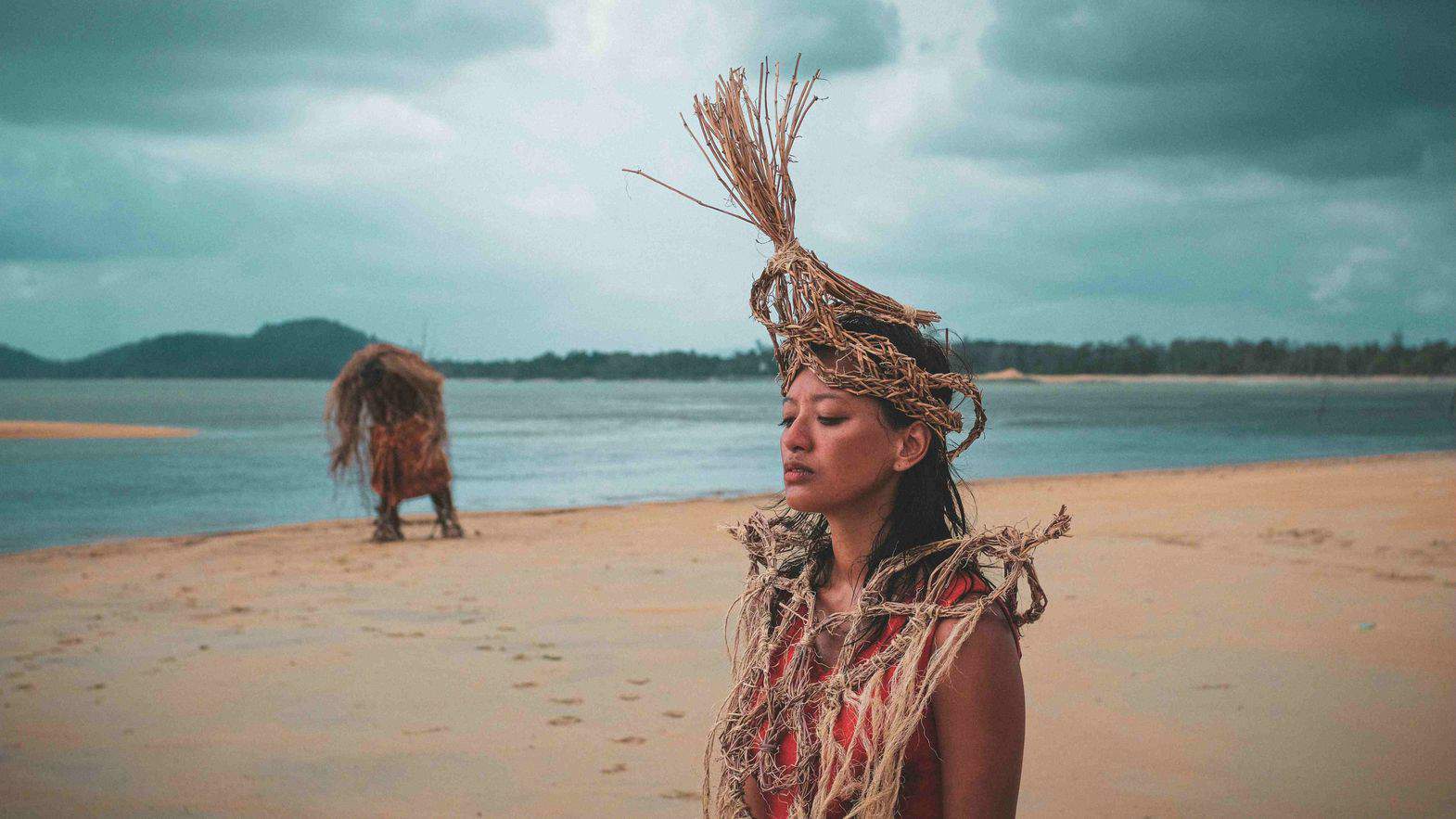
You incorporated animation in the movie, which really rounds up the story. This must have been the longest part of the creative process.
I wanted to insert the animation from the very beginning, and there was obviously a lot of doubt and hesitation involved. We tried to fit the animation into a live-action movie, and honestly, when we began to work on it, we had people telling us how they were not sure if that was a good idea. We would hear things like: “I don't think that this would help the film.” But I just wanted to go with it and thought it was a perfect way of paying hommage to the folklore. I knew that it would be practically impossible to shoot with genuine turtles. At the same time, because in the film the character re-wrote the story, added an addendum and kind of updated it, I also sought the way in which we could do such alternations in a respectful way. On the one hand, one layer is updating the folk tale, giving it a different perspective, and on the other – is it meant to attract a new audience. There were all these various reasons why I wanted to have an animation, but the strongest one was to preserve the folklore and tell the tale. Obviously, the younger generations don't know it, but I knew that once we filmed it, it was always going to be out there. And the title of the film is the title of the folk tale.
How did you chose the animator?
Through Edmund (Yeo) who's mostly based in Japan. Ed is my creative collaborator so I discussed all the creative decisions with him along with the other writers. I asked him for suggestions, because he has a certain sensitivity. Ed also edited the film. So, we were trying to find the right fit regarding the animator or even a smaler animation team because we didn't have a large budget for it. We went through several reiterations that failed. Some of them looked like a Pixar movie, and others like something else we didn't want as well. I think that we lost a lot of time searching. Making the animation actually lasted longer than shooting the whole film. We started working on it eight months before we started filming. Ed knew somebody who is based in Japan and who worked with Studio Ghibli, and that was Paul Williams who immediaty understood what I was after. I told him that one of my favourite animations is “Princess Kaguya”. I love the water colour, pencil sketching, and he totally related to it. When we did the test, his drawings were so smooth. It's a very simple animation done by few people. It's obviously nothing compared to Ghibli works. We worked very closely together to flesh it down. In the end, it took some 5-6 months to finish it.
The photography mainly relies on natural light, and it looks dreamy.
We worked very tight with the cinematographer Kong Pahurak, who doubbled as the still photographer. He has a very good relationship with light. He would tell me that we always have to point the camera against the light. We spent a lot of time discussing what kind of texture to use. But I must say that pre production designer (Seng Tat Liew) also greatly contributed to the look of the film, it wasn't just the cinematography. And Zahara's dress was of the outmost importance for me. We needed just one dress, the one thing to care about. It was my intention not to overwhelm, and by the way, we were limited by Covid-19. Our crew was very small because I didn't want to go over the number which would automatically require a Covid advisor, a form of medical officer. So, when we were looking for that perfect dress, we had to take into consideration the color palette and the cinematography.
I am very satisfied with the look of the film. It was shot with 99% of natural light, except such scenes shot in the interiors and the cave.
You introduce your anti-hero Samad (played by Bront Palarae) as a scientist who's looking for a specific type of turtle. Is that another intentional connection to the myth?
I introduce him as someone who looks harmless, a professor, and an honorable person which he absolutely isn't. There are lots of stories about such people out there in real life. About those previously considered honorable, who turned to be quite the opposite. Especially a respected person in the film industry who abuses his power. That was our starting point. I was also indirectly paying homage to Hiroshi Teshigahara's film “Woman in the Dunes” (1964). There is a scene in which a villager asks the amateur entomologist: “Are you an inspector?”, to which he replies: “No, I am a bug collector.” Not many people will get that, but it's my small tribute to Teshigahara.
I always intended to make the Stone Turtle myth become parallel to Zahara's life. At the end of the day, the film is about her revenge quest, but at the same time, there is something beyond that quest, and that is her daughter. That is also why there is some regret in her although she finishes what she had planned. Regret is also something present in the animated part of the movie. It's the connecting tissue between the animated story and the lead character.
Asmara Abigail has a very strong presence in the movie.
Absolutely! She has this kind of feral, animalistic aura. It was her eyes that I found captivating, and also a type of an Amazon warrior vibe. She also showed incredible endurance, walking everywhere barefoot and braving the hot sun. Asmara is a big star in Indonesia, and our film is a Malaysian-Indonesian co-production, so we are hopeful that we will find a much larger audience.
I believe that if you cast the right actor, it makes everything so much easier. I had a close collaboration with my actors, and they very much contributed to the development of their characters. I've seen Abigail's previous works, and when I casted her, I simply knew that she embodies the character. I just let her run with it. I honestly didn't have much to do because she understood what I wanted. For instance, for the dancing sequence I was about to get a choreographer, and I calculated that we would need weeks to rehearse it, but then – when we saw that she also was a dancer and that she was quite good, especially in the Javanese style dance, instead of shooting for two days, it took us just a couple of hours to get done with it. And on the top of everything, she choreographed the scene herself. I told her what I had in mind, but I also said that she should turn it into her own interpretation, so the camera was pretty much reacting to her. In a way, the actors contributed a lot to the movie. Bront and the layers of duplicity of his character in terms of if he were good or bad, were excellent.
Samara Kenzo is a face one doesn't easily forget. How did you cast her for the role of Zahara's daughter?
I found her as well while I was working on the previous film. I thought her face to be very fascinating, especially her eyes. If you looked very deeply into them, you didn't exactly know what she was thinking. Most young children express their emotions: happiness, sadness, grumpiness, but with her you were never quite sure. There is something mysterious about her. Now she has already acted in a couple of things, but back then she was new to acting.
Would you like to give some personal comment on “Stone Turtle”?
A lot of times the process of filmmaking is very strenuous. I was talking to the lead actor and the lead actress about it. One of my goals while I was making this film was that we should enjoy the process and that the atmosphere should be joyful. My previous film was very stressful, with big set and crew. For Bront as well. Right before my film, he shot a large, commercial feature film with VFX, and Asmara also told me about her experiences working on huge sets with hundreds of crew members. In the case of “Stone Turtle”, we were a small team of 20 people, and it was kind of an intimate set. The intimacy with the DoP and the crew members, I think that it showed in the film, even if it is about the protagonists and the antagonists, it still translated the joy of shooting it on screen. We isolated and bubbled together. In a way, this was also the discovery for me especially after Covid that shooting can be joyous sometimes, and that the result isn't as important as the process.



